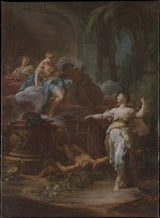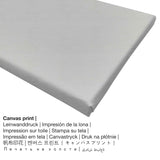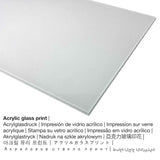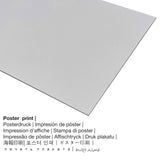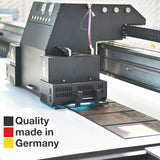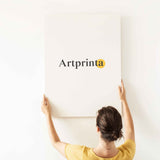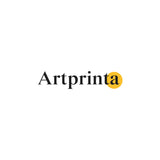Corrado Giaquinto, 1760 - Medea Rejuvenating Aeson - ọmarịcha nka.
Ụtụ gụnyere. Mbupu gbakọrọ na ndenye ọpụpụ.
Nkọwa ihe osise izizi sitere na The Metropolitan Museum of Art (© Nwebiisinka - The Metropolitan Museum of Art - Museumlọ ihe ngosi nka nke Obodo)
This subject from Ovid's Metamorphoses depicts the sorceress Medea casting spells to rejuvenate her husband's father Aeson, whose body lies in the middle of a magic circle. Two altars, dedicated to Hecate and to Youth, are near the figures; a black sheep has been sacrificed on one of them. An inscription on the back of the canvas identifies this painting as a sketch executed by Giaquinto during his sojourn in Spain (1753–62) for a tapestry for the Real Fábrica de Tapices de Santa Bárbara in Madrid. The tapestry, probably destined for one of the royal residences, was never produced.
Ozi ndabere gbasara nka nka izizi
| Aha nka nka: | "Medea Rejuvenating Aeson" |
| Nhazi nka nka: | sere |
| Okwu mkpokọta: | nka ochie |
| Nhazi oge: | 18th narị afọ |
| Afọ okike: | 1760 |
| Afọ nka: | gbara afọ 260 |
| Ihe osise izizi: | mmanụ na kwaaji |
| Nha ihe osise izizi: | 29 x 21 1/2 na (73,7 x 54,6 cm) |
| Ụlọ ihe ngosi nka / mkpokọta: | Museumlọ ihe ngosi nka nke Obodo |
| Ebe ngosi nka: | New York City, New York, Njikota Obodo Amerika |
| Dị n'okpuru: | Museumlọ ihe ngosi nka nke Obodo |
| Ikikere nke ihe osise: | ngalaba ọha |
| Site n'aka: | The Metropolitan Museum of Art, New York, Purchase, University Place Foundation Gift, 2011 |
| Ebe kredit nke ọrụ nka: | Purchase, University Place Foundation Gift, 2011 |
Ozi omenkà Contextal
| aha: | Corrado Giaquinto |
| A makwaara dịka: | Cav. Corradi, Corado, Giacinto Corrado, Giaquinto, Cavaliere Corrado Giaquinto, Corrado Giacquinto, hyacinth corrado, Corado de Rome, Corrado Giaquinto, Chevalier Currado Giaquinto, Corrado, Giaquinto Corrado |
| okike onye nka: | nwoke |
| Nationality: | Italian |
| Ọrụ: | onye na-ese ihe |
| Country: | Italy |
| nhazi ọkwa: | nna ukwu ochie |
| Ụdị nke onye na-ese ihe: | Baroque |
| Afọ ọnwụ: | 63 afọ |
| Afọ ọmụmụ: | 1703 |
| Obodo: | Molfetta, Bari n'ógbè, Apulia, Italy |
| Afọ ọnwụ: | 1766 |
| Ebe ọnwụ: | Naples, mpaghara Napoli, Campania, Italy |
Nkọwa ngwaahịa
| Nkewa edemede: | ọmarịcha nka |
| Usoro mmeghari: | dijitalụ mmeputakwa |
| Usoro nhazi: | mbipụta dijitalụ (Mbipụta UV ozugbo) |
| Ihe ngosi: | Germany |
| Stockdị ngwaahịa: | a na-achọ |
| Ojiji ngwaahịa: | ịchọ mma mgbidi, ihe ndozi mgbidi |
| Ndozi onyonyo: | nhazi ihe osise |
| Oke akụkụ: | 3: 4 ogologo: obosara |
| Ntụgharị nkọwa akụkụ onyonyo: | ogologo bụ 25% mkpụmkpụ karịa obosara |
| Akwa mmeputakwa dị: | akwụkwọ mmado (akwụkwọ kwaaji), mbipụta ọla (aluminium dibond), mbipụta kanvas, mbipụta iko acrylic (nwere ezigbo mkpuchi iko) |
| Nhọrọ nha nha mbipụta kanvas (akwa akwa na etiti ihe ndọtị): | 30x40cm - 12x16", 60x80cm - 24x31", 90x120cm - 35x47" |
| Mbipụta iko acrylic (nke nwere ezigbo mkpuchi iko): | 30x40cm - 12x16", 60x80cm - 24x31", 90x120cm - 35x47" |
| Mbipụta akwụkwọ mmado (akwụkwọ kwaaji): | 30x40cm - 12x16", 60x80cm - 24x31", 90x120cm - 35x47" |
| Mpempe akwụkwọ Dibony (ihe alumnium) nha: | 30x40cm - 12x16", 60x80cm - 24x31", 90x120cm - 35x47" |
| ụba: | agunyeghi |
Nye iwu ihe ị họọrọ
Anyị na-enye ihe dị iche iche dị iche iche na nha maka ngwaahịa ọ bụla. Ị nwere ike ịhọrọ nha na ihe kachasị amasị gị n'ime nhọrọ ndị a:
- Mbipụta nke aluminom: An Aluminium Dibond print is a print with an impressive depth effect - for a modern look and a non-reflective surface. The Aluminium Dibond Print is your perfect introduction to the sophisticated world of fine art replicas with aluminum. The white and bright sections of the original artpiece shimmer with a silk gloss but without the glare. The UV print on Aluminum Dibond is the most popular entry-level product and is a truly modern way to showcase art reproductions, as it puts the viewer’s attention on the replica of the artwork.
- Kwaaji: The printed canvas material mounted on a wooden stretcher frame. Canvas prints are relatively low in weight, meaning that it is easy and straightforward to hang your Canvas print without extra wall-mounts. Canvas prints are suitable for any kind of wall in your home.
- Mpempe akwụkwọ (ihe kwaaji): Our poster print is a printed canvas paper with a fine surface finish, that reminds the original artwork. It is ideally used for putting your art copy using a special frame. Please bear in mind, that depending on the absolute size of the poster we add a white margin between 2-6cm round about the artwork, which facilitates the framing.
- Mbipụta iko acrylic (nke nwere ezigbo mkpuchi iko): The print on acrylic glass, which is sometimes labelled as a plexiglass print, changes the artwork into décor. Additionally, the acrylic glass print offers a good alternative to aluminium and canvas art prints. The work of art is printed with state-of-the-art UV print machines. The special effect of this are vivid, deep color tones. Our plexiglass protects your custom art replica against light and external influences for several decades.
Ihe nka Medea Rejuvenating Aeson si Corrado Giaquinto dị ka akwụkwọ nka pụrụ iche gị
Emere ihe osise nke narị afọ nke 18 site na Corrado Giaquinto n’afọ 1760. Ihe gafere 260 afọ mbụ nwere nha: 29 x 21 1/2 na (73,7 x 54,6 cm) ma emepụtara ya na ọkara mmanụ na kwaaji. Ọ bụ akụkụ nke nchịkọta dijitalụ nke Museumlọ ihe ngosi nka nke Obodo. Obi dị anyị ụtọ ịkpọ nke a ngalaba ọha work of art is included with courtesy of The Metropolitan Museum of Art, New York, Purchase, University Place Foundation Gift, 2011. Creditline of the artwork: Purchase, University Place Foundation Gift, 2011. Ndozi n'ime Eserese format na a akụkụ ruru nke 3: 4, meaning that the length is 25% shorter than the width. Corrado Giaquinto was a painter from Italy, whose artistic style can mainly be classified as Baroque. The European artist was born in the year 1703 in Molfetta, Bari province, Apulia, Italy and deceased at the age of 63 Na 1766 na Naples, Napoli Province, Campania, Italy.
Important note: We try our utmost to describe our products as clearly as possible and to demonstrate them visually on the respective product detail pages. Still, the pigments of the printed materials and the imprint might differ to a certain extent from the image on your monitor. Depending on the settings of your screen and the quality of the surface, not all color pigments can be printed one hundret percent realistically. Since the fine art prints are processed and printed by hand, there might as well be slight differences in the size and exact position of the motif.
© Nwebiisinka | Artprinta (www.artprinta.com)

